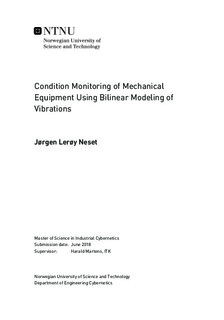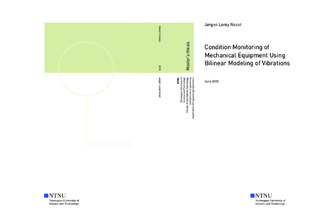| dc.description.abstract | The purpose of this project is to investigate the application of multivariate analysis methods on vibration data obtained from a diesel engine using acoustic contact microphones. A fully instrumented Mercedes-Benz OM613 diesel engine for passenger cars is the subject of the research. Data acquisition was carried out at the Internal Combustion Engine Laboratory at the Norwegian University of Science and Technology.
A large number of measurements related to engine operation, including vibrations, were obtained for a range of different operating conditions. Analysis was initially carried out in the time domain where it was shown that vibration amplitude increases with engine speed and load.
In addition, both traditional time-frequency domain analysis and multivariate analysis methods were studied. Resampling of the vibration data revealed some frequencies that were present for all operating conditions, however increasing in magnitude with increasing engine speed. An attempt was made to connect these frequencies to engine events. A suggestion was that the common rail fuel system, with pressure sensor and fuel regulator could be connected to a static frequency, but with magnitude increasing with engine speed. This theory was further substantiated through that the return of fuel to the tank was increased with engine speed.
Principal component analysis revealed a resonance structure which was not visible in the time-frequency domain analysis. This resonance is thought to be the resonance of the engine block. Several regression models were made for different response variables, with vibration data in the time-frequency domain as predictors. The best regression models were found for the variables weight of exhaust gases, intake temperature and fuel return to tank. Regression models for cylinder pressure and oil temperature were evaluated against regression models where engine speed had been used as the predictor. For the cylinder pressure model, vibration data were better predictors than engine speed, but had an estimated prediction error of 12\% with 7 factors. For the oil temperature model an estimated prediction error of 5.7\% was obtained with 5 factors, but engine speed gave a better model with fewer factors. The vibration models showed promising results, but further research is needed before vibration sensors can replace other sensors. | |

